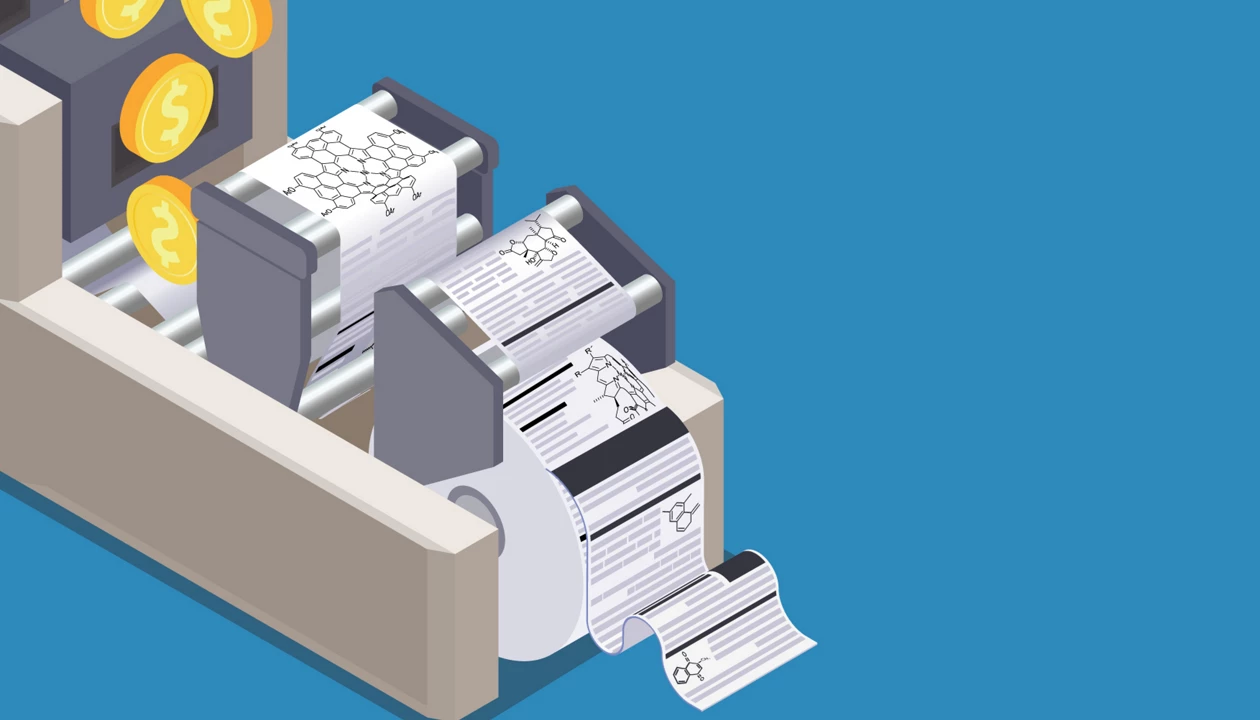Companies that broker and facilitate scientific fraud are large, resilient, and growing rapidly, according to a new study.
The analysis, published in the Proceedings of the National Academy of Sciences of the United States of America on Aug. 4, examined the inner workings of the ARDA Conference, also known as the Academic Research and Development Association. ARDA is a paper mill—a site that lets academics add their names to already-written scientific papers that are accepted to be published in peer-reviewed journals.
Paper mills don’t usually state the names of journals that papers will be published in, but ARDA does so, making it easier to study, says Reese Richardson, a biologist and research integrity expert at Northwestern University who coauthored the new analysis.
In January 2018, ARDA listed 14 journals on its site; by March 2024, that figure had shot up to 86 publications. That’s despite efforts by databases like Web of Science and Scopus to deindex titles found to be cooperating with paper mills. Paper mills sometimes bribe journal editors to get them to publish poor-quality papers on which researchers have purchased authorships.
Deindexing is often seen as an effective tool to counteract paper mills since academics are keen to publish in journals indexed in databases like Web of Science and Scopus. But Richardson says the strategy isn’t working as well as it should because paper mills seem to be growing in size and number.
Nandita Quaderi, editor in chief for Web of Science and senior vice president of the analytics firm that operates it, Clarivate, says the study uses outdated data for Web of Science. “Since December 2021, we have de-listed a further 187 journals for failing our editorial requirements, including many journals flagged in the study,” she says in a statement emailed to C&EN. “Our ability to identify untrustworthy journals has greatly improved since 2023, which is when we introduced proprietary AI tools that look for signs of anomalous behaviour, questionable content (including papermill content), and irrelevant citations.”
Another indicator of the scaling up of organized scientific fraud, Richardson says, is that in recent years, academic publishers have started issuing more retractions in batches. “Publishers seem to recognize that the problem is systematic production of fraudulent science,” he notes.
Just last week, for instance, Retraction Watch reported that the academic publisher Frontiers Media retracted 122 studies published by five of its journals after finding that networks of authors and editors manipulated citations and conducted peer review without disclosing conflicts of interest. Frontiers notes in a statement that it is not the only publisher struggling with faulty papers. The company says its research-integrity team has identified more than 4,000 papers posted on other publishers’ journal sites that are linked to an “unethical” network.
Mark Robinson, corporate media relations manager at the scholarly publisher Taylor & Francis, tells C&EN that the firm is also dedicating “significant resources” to screening papers before peer review. “However, tackling the root causes that encourage and enable misconduct must be a priority for the whole academic community: institutions, funders, and publishers. This includes addressing the pressures on researchers around career advancement, rewards, and incentives,” Robinson adds.
Richardson and his colleagues estimate that the number of papers being pumped out by paper mills is doubling every 1.5 years, whereas the number of retractions is doubling only every 3.5 years. He and his team predict that only 15–25% of paper-mill products will ever be retracted.
“Our main takeaway is we have no clue how large the problem is and how quickly this may overtake legitimate literature,” Richardson says. “But it’s clear that it’s already surpassed in scale the intervention measures that are designed to contain it.”
Chemical & Engineering News
ISSN 0009-2347
Copyright ©
2025 American Chemical Society
